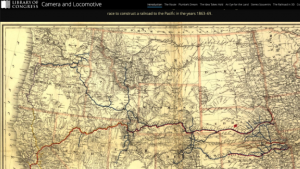Theme: World Photography Day
Back to Top
|
 |
|
 |
|
Historical Photographs of China
|
Social studies |
|
Based at the University of Bristol, the Historical Photographs of China project has been digitizing, archiving, and disseminating thousands of photos of modern China since its launch in 2006. The bulk of these photos are from worldwide private collections held outside of China. Because many of the photographic records within China were destroyed during the 1966-1969 Cultural Revolution, these archives may be of particular interest to scholars of modern Chinese history as well as to general audiences. Visitors may like to begin by browsing the Featured Collections, which highlights some of the projects particular strengths, such as the work of the diplomat Fu Bingchang and photos relating to the lives of men who served in the Chinese Maritime Customs Service, and in the Shanghai Municipal Police. The Lucky Dip section, which offers up a random sampling from the archive, is also an excellent way to explore this fascinating collection. This large archive was originally known as Visualising China, but over its first decade the collection grew so much that a new platform was needed, so it migrated to its current web home in 2017. The Historical Photographs of China project is directed by Robert Bickers, a professor of history at the University of Bristol. [JDC] |
|





|
|
 |
|
 |
|
Cambridge in Colour
|
Arts |
|
For beginning photographers, the transition to a DSLR camera from a simple point-and-shoot or smartphone often comes with a steep learning curve. One resource that can help remedy this is Cambridge in Colour. Here, readers will find an extensive collection of free tutorials and tools created to help new digital photographers learn the ins and outs of this craft. While there are many photography blogs online, Cambridge in Colour strives to provide more permanent, reference-style content that readers can continue to benefit from time and again. Toward this end, its well-organized tutorials typically focus more on concept than procedure, are highly visual and often interactive, and cover each topic thoroughly but concisely, while also aiming to remain as independent of the type of camera or software as possible. A selection of tutorials highlighted as photography essentials, as well as recent additions, are featured on the main page, while the full list of tutorials, links to various calculator tools, and the Cambridge in Colour forums can all be easily located through the sites menu. Cambridge in Colour was founded in 2005 by Sean McHugh, a chemical engineer by training who launched the site while pursuing his PhD at the University of Cambridge. [JDC] |
|





|
|
 |
|
Harry Ransom Center: Stanley B. Burns, MD Tintypes Collection
|
Arts |
|
The University of Texas at Austin, Harry Ransom Center (HRC) has a wealth of collections related to the history of photography, many of which are now available online, including the Stanley B. Burns, MD Tintypes Collection. Dr. Stanley B. Burns, who donated the collection to HRC, is a New York City ophthalmologist who began collecting historical photographs in 1975 and established the Burns Archive in 1977. The 121 tintypes, primarily portraits, in the collection at HRC are unique in several ways. First, the images are exceptionally large; the most common size in tintypes is the one sixth plate, or 2.75 x 3.25 inches; many of the Burns collection images are imperial or mammoth plates, larger than 6.5 x 8.75 inches. In addition, the tintypes are hand-colored and are in period frames. For example, a portrait of the 20th U.S. President, James Abraham Garfield has an image size of about 12 x 9.75 inches, with painted skin tone and background, and is in an ornate frame, characterized as Barbizon School. Including this frame, entire piece measures 22.5 x 20.5 inches. Visitors to the site can browse the entire HRC, with options to filter by photography format, subject, date, and frame style. [DS] |
|





|
|



















